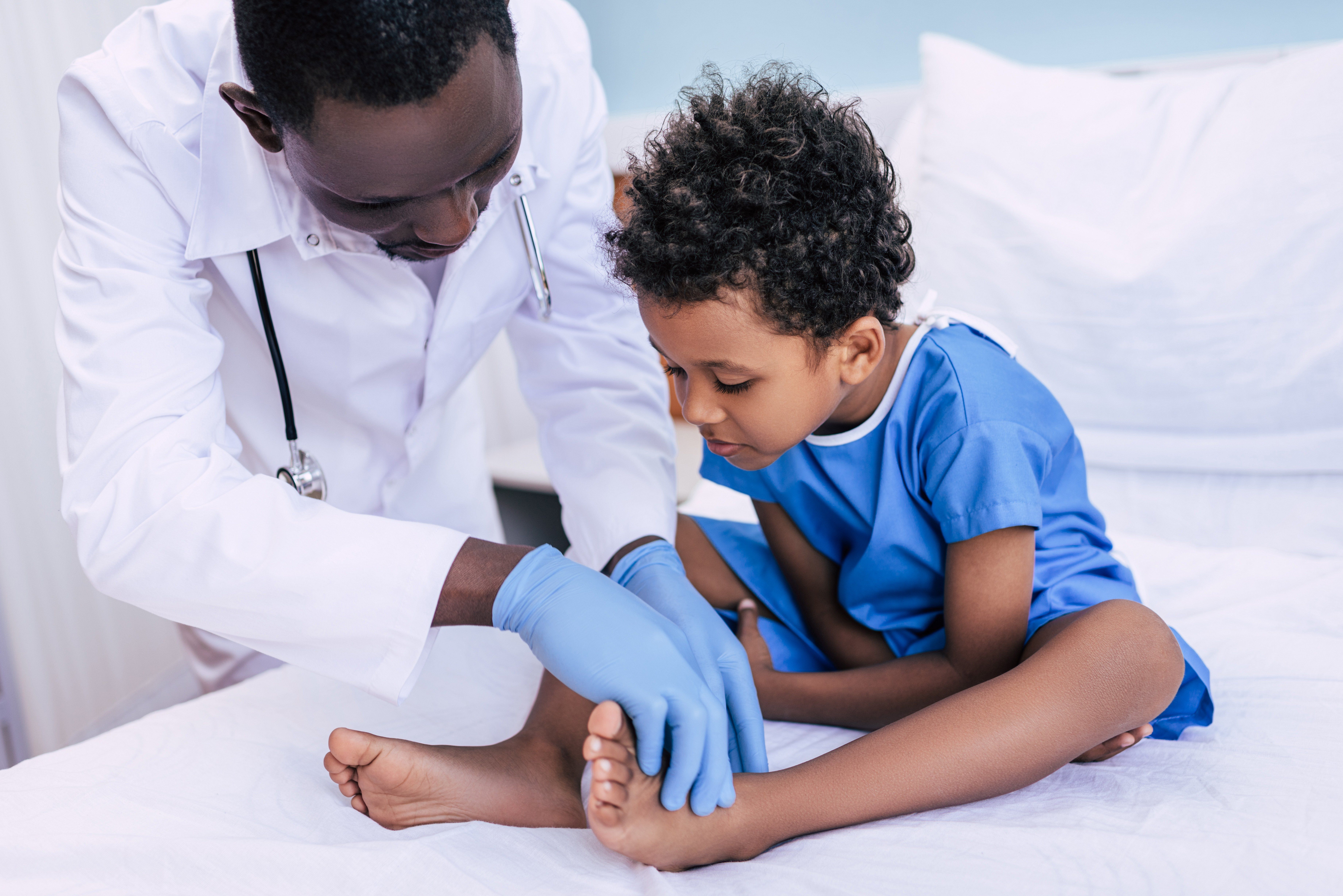- Case-Based Roundtable
- General Dermatology
- Eczema
- Chronic Hand Eczema
- Alopecia
- Aesthetics
- Vitiligo
- COVID-19
- Actinic Keratosis
- Precision Medicine and Biologics
- Rare Disease
- Wound Care
- Rosacea
- Psoriasis
- Psoriatic Arthritis
- Atopic Dermatitis
- Melasma
- NP and PA
- Skin Cancer
- Hidradenitis Suppurativa
- Drug Watch
- Pigmentary Disorders
- Acne
- Pediatric Dermatology
- Practice Management
- Prurigo Nodularis
- Buy-and-Bill
Publication
Article
Dermatology Times
Tips on treating children with autism
Author(s):
Caregivers of children with autism often expect dermatologists to have an understanding of the disorder, but that may not always be the case. Learn how to best navigate clinical situations with this patient population in this article.
"Every kid's sensitivity and behavioral aspects are totally unique," says Dr. Oza, "You just have to be flexible." (LIGHT FIELD - stock.adobe.com)

The Centers for Disease Control & Prevention estimates that 1 in 59 children in the U.S. is diagnosed with an autism spectrum disorder (ASD), meaning dermatologists who treat children are likely to see patients with autism on a regular basis.
Due to the prevalence of the condition, caregivers of patients with autism often expect dermatologists to have an understanding of the disorder, but that may not always be the case.
“Within ASD, there is great variability,” Vikash S. Oza, M.D., assistant professor of dermatology and pediatrics at New York University School of Medicine, said during his March 6 presentation at the American Academy of Dermatology annual meeting. “There are children at high-functioning levels who are very intelligent, and then 20% with ASD are non-verbal.”
Most medical literature offers little insight for the dermatologic care of this patient population, but there are a few recently published reports, including a review authored by Dr. Oza, that attempt to shed light on best practices.
Dr. Oza shared tips from the review in an interview with Dermatology Times:
Prepare for the patient visit
"One of the defining features of kids who have autism is that they have a lot of difficulty with transitions," Dr. Oza says.
New settings – like a doctor's office – can cause intense stress.
"Many times it's a fear of being in a new place," he says.
You may wish to schedule appointments at the beginning or end of the day when things are less hectic. Consider giving patients a "tour" of the office and letting them wait in examination rooms, which are less stimulating than waiting rooms. Dim, quiet, uncluttered examination rooms may also be helpful.
During the office visit, Dr. Oza says, you may need to make special adjustments.
"If the kid is having a tantrum, maybe say you'll call the parent on the phone and get the rest of the history," he suggests.
The good news: "With a relationship over time, they may feel more comfortable in the clinical environment," he adds.
Be conscious of treatment sensitivity
Keep in mind that a strong component of autism is sensory disintegration. Children with autism may be much more sensitive than other kids to treatments like topical agents, Dr. Oza warns. Greasy ointments, for example, may cause irritation or create a sensation of having something thick on the skin.
"It's like dogma that we mainly use ointments as topical steroids," he notes. "You may have to be more flexible."
Using a lotion or foam may be a better alternative, he says. Another good idea is to apply a topical treatment to a small area first instead of suddenly covering up a larger area all at once. And if you are using Aquaphor, patients with autism may be more tolerant of a spray, he adds.
Pay attention to skin conditions connected to behavior
Children with autism may engage in behaviors like hand flapping, hand wringing, hair pulling and skin picking that could cause skin conditions. Repetitive rubbing of the skin, for example, can cause lichen simplex chronicus, while skin picking can result in prurigo nodularis, Dr. Oza says.
"We may need to work hand in hand with a psychologist or a psychiatrist to try to reduce these behaviors," he says.
Also, he says, be aware that kids with autism may develop very restrictive diets.
"There are many reports of kids with autism presenting with scurvy," he notes.
Understand that patient and parents may diverge
In some cases, children with autism may not be bothered by conditions like acne or vitiligo, Dr. Oza says.
"They may have something that's outwardly disfiguring, but not feel the same impacts [as other children], like self-consciousness or embarrassment," he says. Even so, parents may still push for treatment.
"This may be because they see this as an area in which they can intervene," he says. "It can be a complex conversation when these things come up."
Consider genetic conditions when appropriate
"While uncommon, there are certain genetic diagnoses that are associated with high rates of autism, and some have specific skin features," says Dr. Oza.
Two notable conditions to consider, he says, are tuberous sclerosis (a rare condition that causes non-cancerous tumors in the skin and other organs) and PTEN hamartoma tumor syndrome (which causes tumor-like growths known as hamartomas).
Watch out for signs of behavior change
According to Dr. Oza, some children with autism "are not able to effectively communicate what may be bothering them." As a result, they may suffer silently from any one of a number of medical conditions, such as constipation (which he said is extremely common in this population), other intestinal problems, dental problems like cavities and abscesses, and headaches.
Dermatologists should be aware that these children may reflect their internal stress through behavior changes like intensified skin picking. Be prepared to ask the child's pediatrician to follow up, he says.
In the big picture of treatment of children with autism, Dr. Oza wants dermatologists to remember that "every kid's sensitivity and behavioral aspects are totally unique."
At the same time, he adds, it's unlikely that dermatologists will need to actually adjust the necessary treatment for one of these patients.
"You just have to be more flexible," he says
Disclosures:
Dr. Oza reports no relevant disclosures.
References:
Oza VS, Marco E, Frieden IJ. Improving the dermatologic care of individuals with autism: a review of relevant issues and a perspective. Pediatr Dermatol. 2015;32(4):447–54. https://doi.org/10.1111/pde.12548







